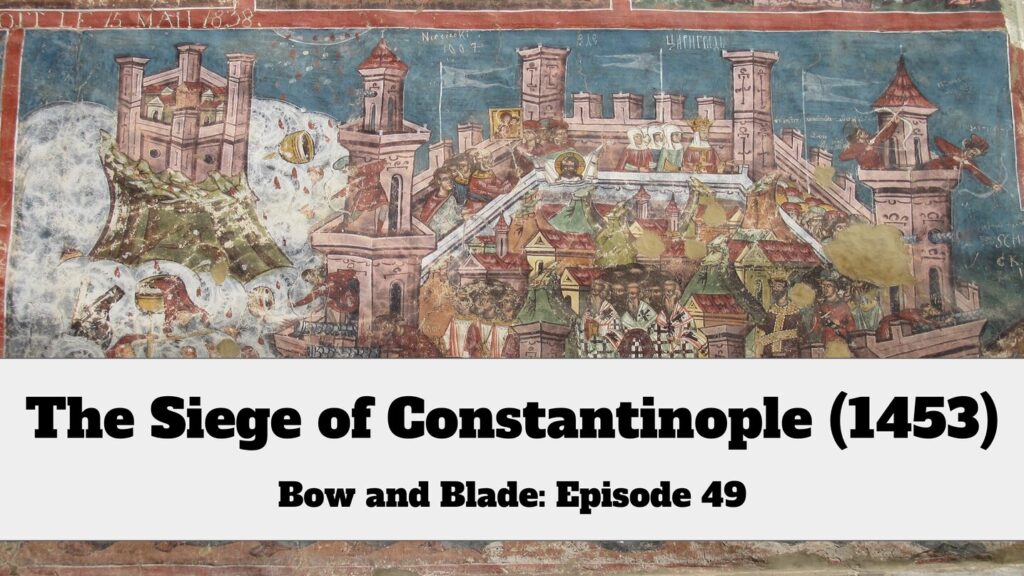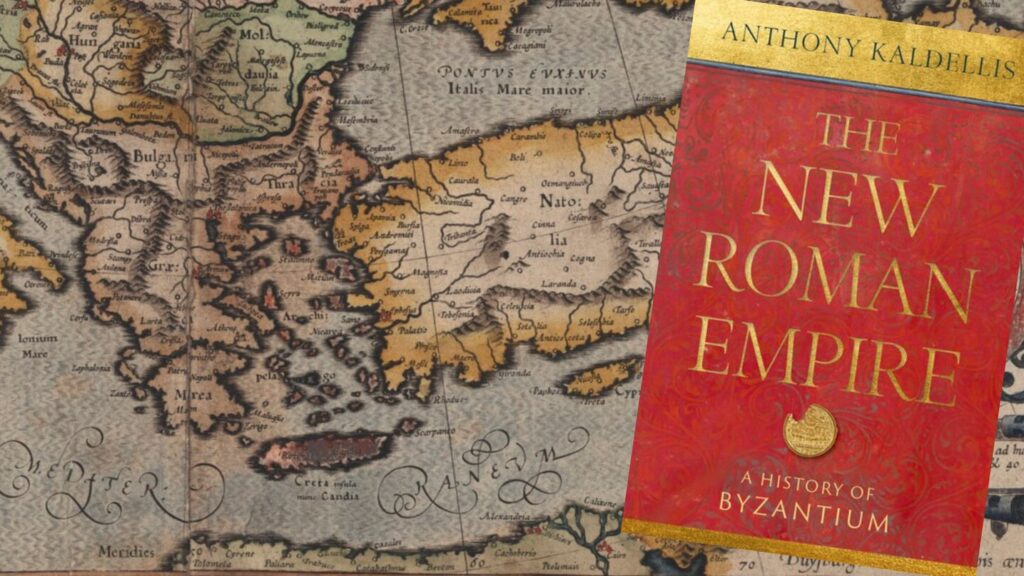Medieval Constantinople’s Wildest Feud: How One Man Built an Earthquake Machine for Revenge
In medieval Constantinople, a neighbourhood feud between an architect and a lawyer escalated into a battle of wits involving steam-powered earthquakes and blinding mirrors. This is the bizarre story of how one man used science to terrorise his rival, earning himself the nickname ‘Zeus the Lightener.’
Defeat at the Gates: How Inexperience Crushed Byzantium’s Army in 986
In August 986, the Byzantine Empire suffered a devastating defeat at the Battle of the Gates of Trajan, where Emperor Basil II’s inexperienced forces were ambushed by the Bulgarian army. This battle marked a pivotal moment in the Byzantine-Bulgarian wars, exposing the empire’s vulnerabilities and shaping Basil’s future as a military leader.
The Travels of Manuel II Palaiologos, Emperor of the Romans
The story of Manuel II Palaiologos, whose travels would take him to Paris and London, and his efforts to protect his empire.
New Medieval Books: A Companion to the Environmental History of Byzantium
A collection of 17 essays that cover a wide range of topics, including climate, water management, nature, and even earthquakes in the eastern Mediterranean region during the Middle Ages.
Becoming a Saint in Byzantium
The model or ideal of human behaviour and achievement in Byzantium was to become a saint.
7 Cunning Byzantine Tactics to Defeat a Medieval Army
Discover ingenious ways to outsmart and defeat a medieval army without direct confrontation, as detailed in the 10th-century Byzantine military manual, the Sylloge Tacticorum.
Byzantium in science fiction, fantasy, and horror, with Przemysław Marciniak
A conversation with Przemysław Marciniak about books of fantasy, science fiction, horror, and alternative history that are either set in Byzantium or have a Byzantine ambiance. We talk about the features that signal a Byzantine setting and what the latter is good. Basically, we chat about books that we liked (or did not like).
The Mysterious ‘Lord S’ and a Murder in the Latin Empire of Constantinople
Who killed William, Archbishop of Philippi, in 1217?
How to Murder a Byzantine Emperor
An empire like Byzantium does not last for a thousand years without its own share of political intrigue. Here are three accounts of murder told by medieval chroniclers in vivid detail, in which the plot did not go as smoothly as the conspirators hoped but ultimately resulted in a new emperor on the throne.
Africa and Byzantium, with Andrea Myers Achi
A conversation with Andrea Myers Achi (The Metropolitan Museum of Art) about the enduring connections between Byzantium and a number of African cultures, beginning in late antiquity (e.g., Aksum) and continuing into medieval and modern times (e.g., Nubia and Ethiopia).
New Medieval Books: Kassia the Nun in Context
This book profiles the life of Kassia, a ninth-century Byzantine aristocrat who spurned an emperor and became a nun and abbess. Her story tells us much about being a woman and a religious leader in Byzantium.
Chariot Race described in medieval poem
While chariot races are usually associated with Ancient Rome, they were still taking place long into the Middle Ages. A poem from the twelfth century gives us an exciting look at this sport.
The Siege of Constantinople (1453)
One of the key dates from the Middle Ages is the year 1453. In this episode of Bow & Blade, Michael and Kelly discuss how the Ottomans were able to conquer the city of Constantinople and bring an end to the Byzantine Empire.
Byzantium and the early Rus’, with Monica White
A conversation with Monica White about the earliest contacts between Constantinople and the first Rus’-Varangian raiders, traders, and mercenaries to cross the Black Sea. Who were these people, what did they want, and how did contact with East Roman culture change them?
The emperor’s clothing and public appearances, with Maria Parani
A conversation with Maria Parani on the emperor’s clothing and the staging of his public appearances. We talk about his most formal garments, what he wore on the battlefield, his military banner, how he changed, and much more.
New Roads, New Rome: A Byzantine Playbook for Modern Politics
A look at Anthony Kaldellis’ new book The New Roman Empire: A History of Byzantium.
Inheriting the Mantle of the Roman Empire, with Nathan Aschenbrenner
A conversation with Nathan Aschenbrenner about Western European claims to the Roman imperial title, from the Middle Ages to early modernity. We also discuss some plans in the West after 1453 to reclaim the “eastern empire” and a curious history from the early sixteenth that fuses Western and Eastern imperial history into one.
Dis/ability and Byzantine Hagiography
I will discuss first the differences in the narrative teatments of disability by various hagiographers, and their attempts at explaining its source or reason depending on their religious and moral agendas.
Justinian: statecraft, law, and self-glorification, with Peter Sarris
A conversation with Peter Sarris about the emperor Justinian (527-565), on the 401st anniversary of the rediscovery of Prokopios’ Secret History. We talk about Justinian’s goals, accomplishments, and victims, all of which continue to spark debate and controversy, just as they did during his own lifetime.
New Medieval Books: Byzantine Military Rhetoric in the Ninth Century
Want to know what kind of speeches a military commander gave in the Middle Ages? This book is a ninth-century guide from Byzantium on just how to do that, with examples based on fighting for your faith or country, and how to endure pain.
The Discovery of Constantinople, with Sarah Bassett
A conversation with Sarah Bassett about the exploration and discovery of the antiquities of Constantinople, starting in the sixteenth century. We talk about scholars, diplomats, and archaeologists, and the intellectual trends of their times.
Religion, Politics, and Identities in Byzantium: Aspects of Medieval Greek Homilies
Homilies, or church sermons, formed an indispensable part of European medieval rhetoric, East and West. Throughout the millennial existence of the Byzantine Empire (AD 330–1453), they carried the burden of the classical Greek tradition of rhetoric, which they continued in varying forms.
Looking for scapegoats: The betrayal of Romanos Diogenes by Trachaneiotes and Doukas at Manzikert and the role of Attaleiates’ narrative
Few people have been vilified in such a way after the disastrous outcome of a decisive battle other than Trachaniotes, Roussel of Bailleul, and Andronikos Doukas.
How Hagia Sophia was Built
The story of the building of Hagia Sophia, one of the greatest construction works of the Middle Ages.
Major exhibition on Africa & Byzantium set to begin at The Met
This weekend marks the beginning of a major new exhibition at The Metropolitan Museum of Art in New York. Africa & Byzantium will present nearly 200 artworks, including many that have never before been exhibited in the United States.
























